On test: Battery-powered Polaris Ranger XP Kinetic
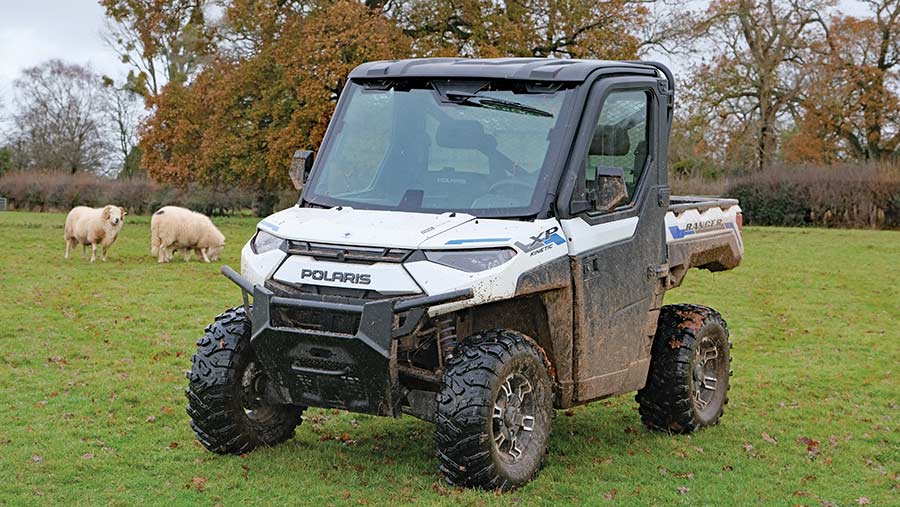 © James Andrews
© James Andrews The UTV might have taken the farming world by storm, but these compact off-roaders have several compromises to counter their convenience.
Downers for ubiquitous diesels are sluggish acceleration and a wearisome din in the cabin, while zippier and (slightly) quieter petrol equivalents require a direct feed from your nearest refinery.
But there is a third way – electricity. And with power to rival the fastest octane models, far less noise, and the ability to refuel from a plug socket, this invisible energy source appears to have the shortcomings of its combustion counterparts covered.
See also: On test: Polaris Ranger Diesel
One such model hoping to make its mark is the new Ranger XP Kinetic from Polaris.
Leafing through the spec sheet makes for compelling reading, with a giddy 110hp offered from its permanent magnet AC motor that puts it on a par with the lairy XP1000 petrol.
There’s also 190Nm of torque on tap, and a range of up to 45 miles to a charge of its 14.9kWh lithium-ion battery pack.
Polaris Ranger XP Kinetic Premium
- Motor 110hp permanent magnet AC
- Battery pack 14.9kWh lithium-ion
- Transmission Belt drive with high and low range
- Top speed 40mph (limited)
- Estimated range 45 miles
- Kerb weight 808kg
- Towing capacity 505kg (1,134 braked)
- Cargo box capacity 567kg
- Starting price £29,199
- Premium cab kit £4,799
- Rear rack with winch £601
Plenty of power
From the seat, performance is equally impressive, with it surging up to a limited top speed of 40mph in less than four seconds, providing drivers can find a surface with enough grip.
Larger wheels and tyres have been fitted to help get the power down, but those with a heavy right foot will still get these to break free.
Tapping into this peak performance requires selecting the highest of three power modes, labelled “Sport”.
But once the novelty of lighting up the tyres has worn off, it’s worth playing around with the two lesser settings, which deliver more sensible throttle response and help save precious battery power.
“Eco” is fine in easy conditions, although it lacks the oomph required to keep moving over particularly boggy ground, while “Standard” is good for everything, including towing.
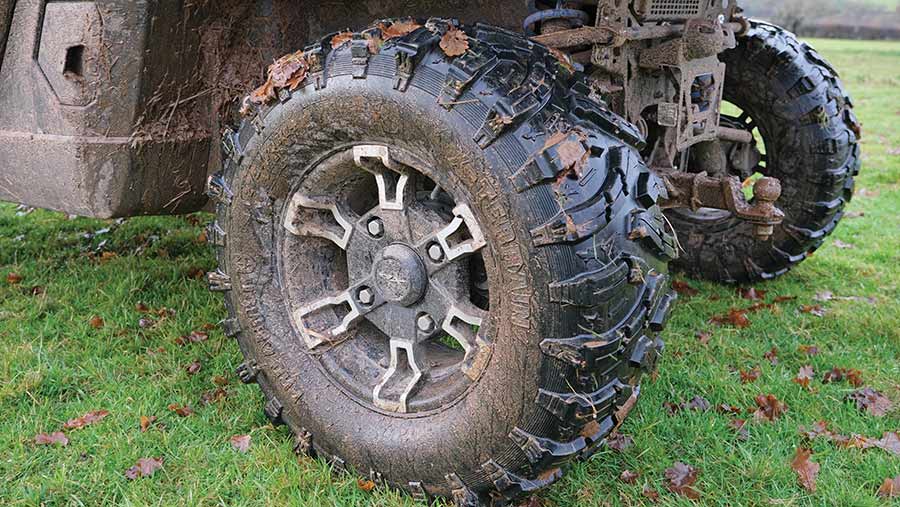
© James Andrews
Quiet at last
Equally as impressive as the power is the noise reduction in the cabin, which allows occupants to comfortably hold a conversation at full speed.
It’s by no means silent, with the motor and transmission whining away in the background and a healthy amount of tyre and wind noise when travelling fast on hard surfaces.
Even so, it’s by far the most civilised Polaris offering to date.
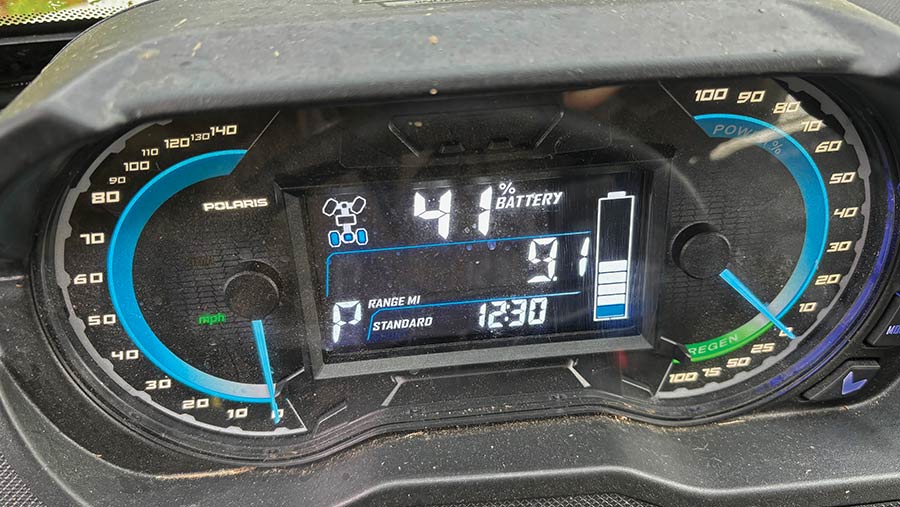
© James Andrews
One less-desirable side effect of the hush is that you notice every rattle and clonk emanating from the drivetrain, which is particularly noticeable when you first set off.
This is because the XP Kinetic is still based heavily on a conventional Ranger, with the electric motor connected to an orthodox mechanical transmission, which in turn spins driveshafts and differentials.
The only major difference is that it runs a permanently tensioned belt, rather than one that has its ratios altered by variable-speed pulleys.
The fact that the rubber isn’t being continually squashed and squeezed means it lasts far longer and doesn’t need to be replaced in a standard service.
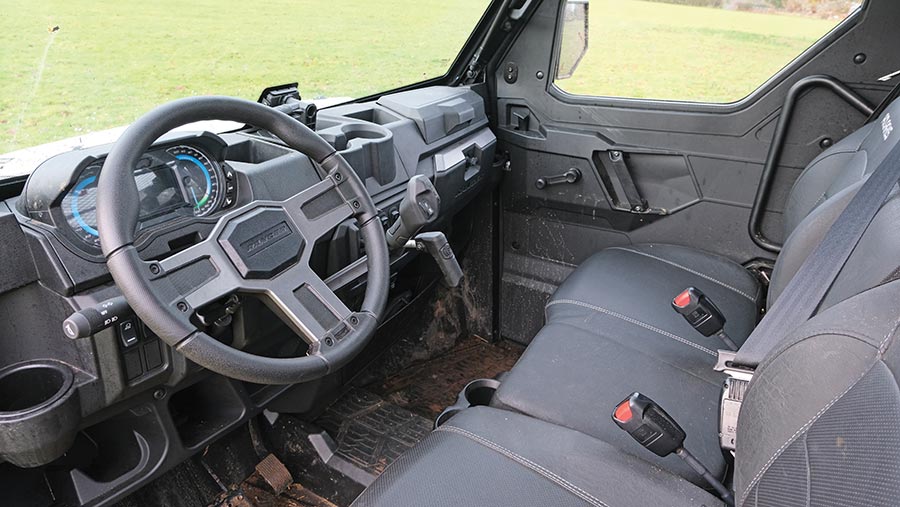
© James Andrews
Limited range
Things might be looking rosy for the XP Kinetic at this point, but when you start considering battery range, it soon starts to lose its edge.
The Premium model seen here is fitted with 14.9kWh of lithium-ion battery packs that give it an “estimated” range of 45 miles.
It sounds quite a lot for a machine that only carries out short trips, but the miles soon mount up when cruising around a farm all day.
Added to that, this figure is based on saint-like driving in ideal conditions, so fast acceleration and towing of heavy trailers will carve sizeable chunks off the distance it can travel.
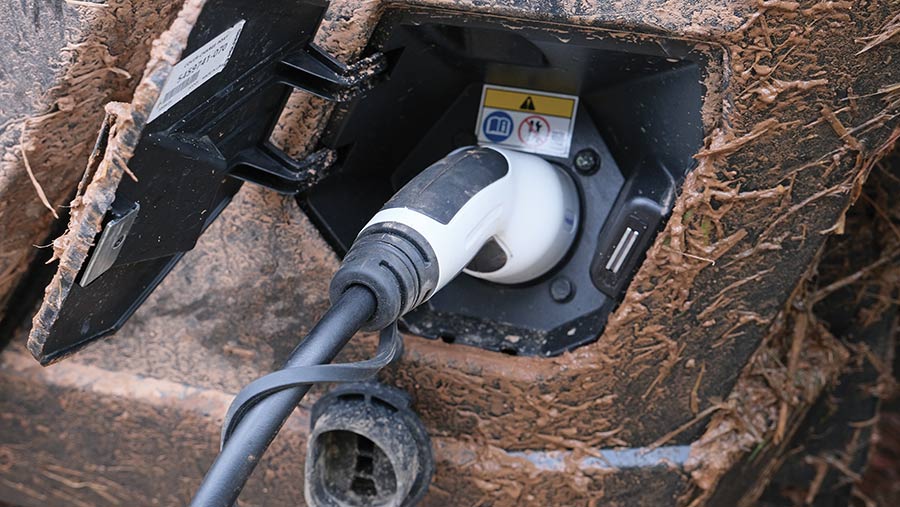
© James Andrews
Jobs that suit it down to the ground are steady trips, such as checking and feeding stock, where there’s plenty of pausing to open gates and unload fodder.
Where a combustion model would usually be idling and burning fuel at these moments, the Kinetic is supping zero electrons.
Less well suited are tasks such as slug pelleting that require sustained high speeds, or towing heavy loads over long distances. Regardless of the type of user, charging will inevitably be a more frequent occurrence than topping up a fuel tank.
If the standard batteries simply won’t cut it, buyers can shell out for an Ultimate model, which has double the capacity. However, this is considerably more expensive and heavier.
Charging antics
Cells are replenished via an inbuilt 3kW charger, which will complete a full cycle in about five hours when connected to a three-pin socket or a car-charging wall box.
Opting for an additional charger will significantly speed up the process for those with a wall box, but it won’t make any difference when plugged into a standard socket.
If you suddenly decide you need more range, it’s no five-minute job to add it. So, it’s worth getting into the habit of plugging it in when returning to the yard, even if there’s plenty of range left.
The charging process is simple enough, with the lead connecting into a port where the fuel filler would normally be.
However, after testing in some decidedly soggy conditions we found it refused to accept charge.
Polaris tells us this was due to water ingress and it started functioning again once they’d dried out the electrics.
Its sensitivity to moisture also means it shouldn’t be driven through water any deeper than the cabin floor and pressure washing needs to be carried out carefully.
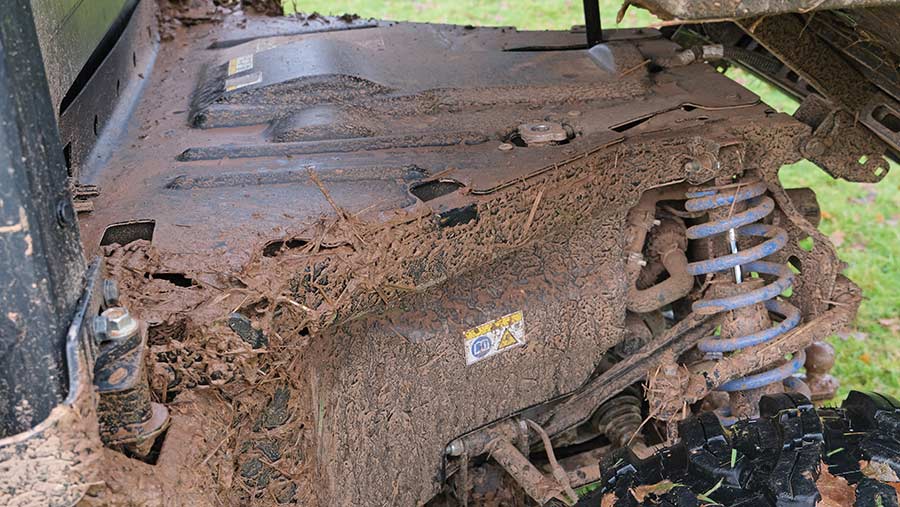
© James Andrews
Running costs
Although electricity prices have gone through the roof in recent years, it still isn’t all that expensive to charge the XP Kinetic.
If you’re on a 30p/kWh tariff, for example, the cost of fully replenishing the 14.9kWh cells will be £4.47. And the fact it will mostly be plugged in for smaller top-ups, means it could only cost a couple of quid a go.
For anyone with solar panels installed, the running costs will be lower still, or free depending on the amount of sunshine at the time they hook up.
But savings on running costs need to be hefty to counteract the meaty purchase price relative to a combustion model.
Starting price for the XP Kinetic Premium, not including a cab, is £29,199, while a Ranger Diesel can be picked up from £17,899 and a XP100 Petrol from £18,399.
When you get up to these sorts of figures, the cheap interior plastics and flimsy trim – which are just about passable on a sub-£20,000 machine – also feel unacceptably poor.
You don’t expect window winder handles that pop off in your hand when you’re spending £30,000-plus.
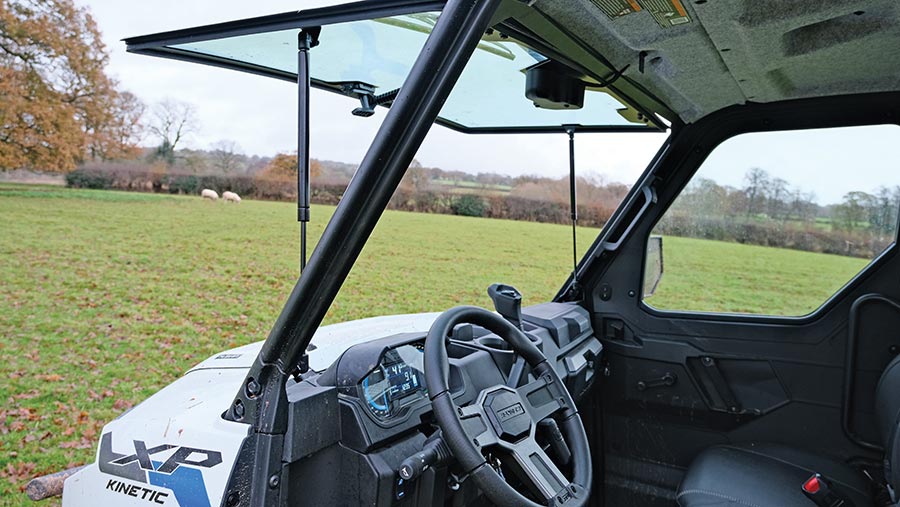
© James Andrews
Verdict
Judge it purely on the way it drives and the XP Kinetic is a clear winner over its petrol and diesel brethren.
It’s blisteringly quick, power delivery is instant yet smooth and, despite the whine of the motor, it’s far quieter in the cabin.
Once you’ve set up a suitable charging location, it should be easy and cost-effective to keep the batteries topped up too.
But it’s not all good news. Range will be a limiting factor for heavy users, particularly those who do a lot of high-speed jaunts down the road, it’s far more expensive to buy than a combustion model and there are some questions over how well the electrics are sealed against water ingress.
So, despite its cabin noise and steady performance, our money would still likely go on a Ranger Diesel. Or perhaps an XP1000 with fitted with an LPG conversion.
Liked and gripes
Likes
- Loads of power
- Quieter than a petrol or diesel
- Good off-road performance
- Supple suspension
Gripes
- Limited range
- Build quality could be better
- Electrics sensitive to water ingress
- Expensive

